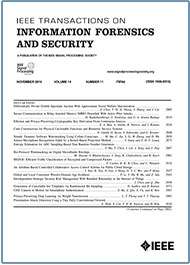Decouple and Resolve: Transformer-Based Models for Online Anomaly Detection From Weakly Labeled Videos
Top Reasons to Join SPS Today!
1. IEEE Signal Processing Magazine
2. Signal Processing Digital Library*
3. Inside Signal Processing Newsletter
4. SPS Resource Center
5. Career advancement & recognition
6. Discounts on conferences and publications
7. Professional networking
8. Communities for students, young professionals, and women
9. Volunteer opportunities
10. Coming soon! PDH/CEU credits
Click here to learn more.
Decouple and Resolve: Transformer-Based Models for Online Anomaly Detection From Weakly Labeled Videos
As one of the vital topics in intelligent surveillance, weakly supervised online video anomaly detection (WS-OVAD) aims to identify the ongoing anomalous events moment-to-moment in streaming videos, trained with only video-level annotations. Previous studies tended to utilize a unified single-stage framework, which struggled to simultaneously address the issues of online constraints and weakly supervised settings. To solve this dilemma, in this paper, we propose a two-stage-based framework, namely “decouple and resolve” (DAR), which consists of two modules, i.e., temporal proposal producer (TPP) and online anomaly localizer (OAL). With the supervision of video-level binary labels, the TPP module targets fully exploiting hierarchical temporal relations among snippets for generating precise snippet-level pseudo-labels. Then, given fine-grained supervisory signals produced by TPP, the Transformer-based OAL module is trained to aggregate both the useful cues retrieved from historical observations and anticipated future semantics, for making predictions at the current time step. Both the TPP and OAL modules are jointly trained to share the beneficial knowledge in a multi-task learning paradigm. Extensive experimental results on three public data sets validate the superior performance of the proposed DAR framework over the competing methods.
Video anomaly detection (VAD), which aims to satisfy the increasing demands of security in our daily life and greatly free human efforts [1], [2], [3], plays a crucial role in intelligent surveillance systems. In particular, the goal of VAD is to identify the frames or snippets that involve anomalous events, e.g., burglary, robbery, explosion, in unconstrained videos. Most of the previous VAD methods were devoted to unsupervised learning paradigms [4], [5], [6], [7], which train a model to memorize normal patterns by solely using normal samples. Then, in the inference phase, the outliers, i.e., the abrupt patterns with high reconstruction or prediction errors, are deemed as anomalies [8]. However, unsupervised VAD methods tend to produce a high false alarm rate for unseen normal events [9], due to lack of knowledge on the anomaly samples. Recently, to improve this limitation, the weakly supervised video anomaly detection (WS-VAD) paradigm [10], [11], [12], [13], [14] has been proposed by introducing video-level binary labels into the training stage. Compared with the unsupervised pipeline, the WS-VAD paradigm yields a more satisfactory trade-off between the detection performance and manual annotation cost.
SPS Social Media
- IEEE SPS Facebook Page https://www.facebook.com/ieeeSPS
- IEEE SPS X Page https://x.com/IEEEsps
- IEEE SPS Instagram Page https://www.instagram.com/ieeesps/?hl=en
- IEEE SPS LinkedIn Page https://www.linkedin.com/company/ieeesps/
- IEEE SPS YouTube Channel https://www.youtube.com/ieeeSPS












